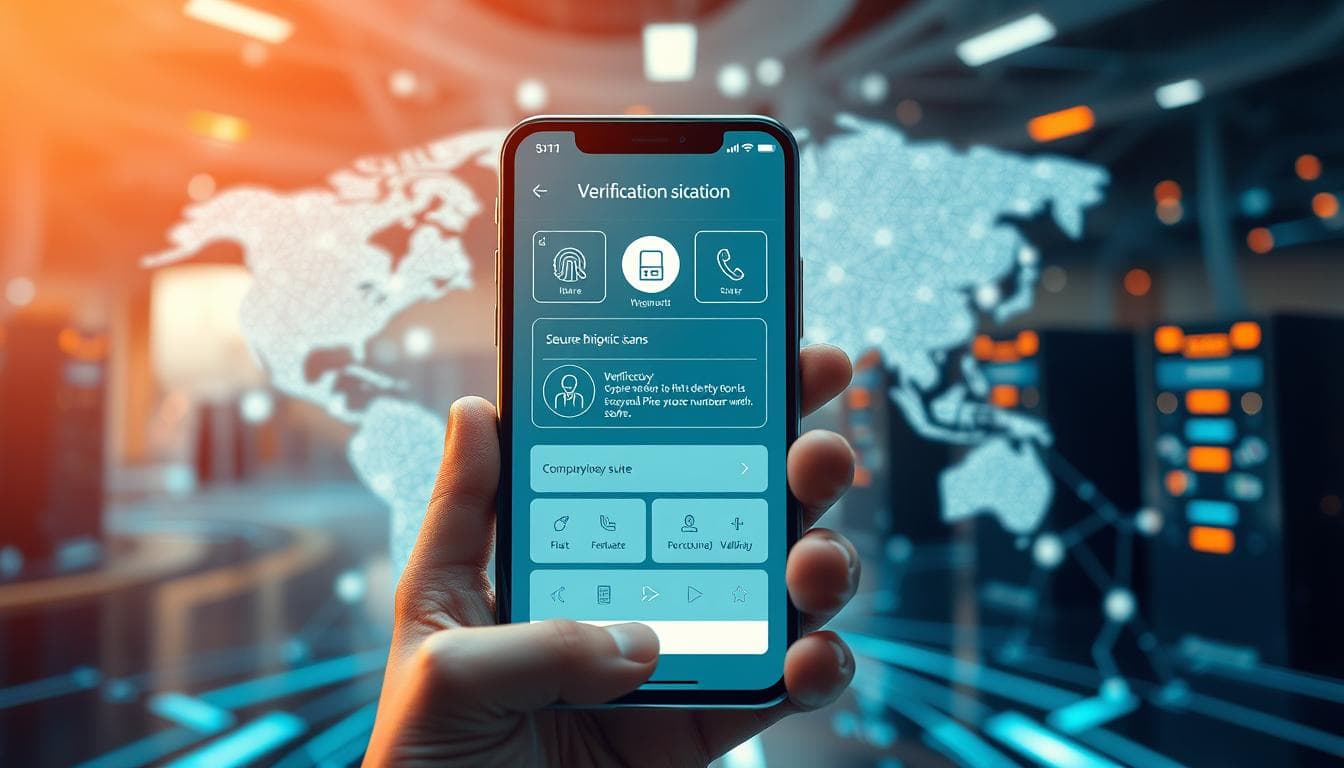Imagine a customer waiting on hold for the third time this week. Each passing minute increases their likelihood of switching to a competitor. This was a common scenario at our client's contact center before our intervention.
The pressure on organizations to manage customer interactions is immense. Research shows that 76% of consumers would stop doing business with a company after a single bad experience. This statistic was a wake-up call for our mid-sized client partner.
We recognized that call center productivity was more than just quick responses. It entailed balancing quality interactions with operational targets while monitoring essential metrics.

Our strategy targeted critical performance indicators like customer satisfaction, first contact resolution, and average handle time. We aimed to enhance agent skills, streamline processes, and introduce advanced technology solutions.
The outcomes were impressive: we saw a 47% boost in overall contact center performance. This case study details how we achieved this and the valuable lessons we learned.
Key Takeaways
- Customer experience fragility is real—76% of consumers abandon brands after one poor interaction
- Effective optimization balances operational efficiency with genuine relationship building
- Tracking the right key performance indicators provides the foundation for measurable improvements
- Comprehensive transformation requires addressing people, processes, and technology simultaneously
- Strategic partnerships between consultants and organizations drive better outcomes than vendor relationships
- Data-driven approaches to agent productivity yield significant, sustainable results
The Call Center Performance Challenge Our Client Faced
Our client's operational struggles went beyond surface-level metrics. They sought our help as their call center's performance declined, impacting their business deeply. Frustrated agents and dissatisfied customers were evident, with complaints spreading on social media.
Transforming their operation required a detailed diagnosis of both quantifiable metrics and systemic issues. Our initial assessment uncovered problems that went beyond simple training gaps or technology limitations.
Baseline Metrics That Revealed the Crisis
The numbers painted a dire picture. Their customer satisfaction score was just 68%, far below the 80-85% industry benchmark. This gap indicated thousands of unhappy customers, likely to seek alternatives.
Their first call resolution rate was only 58%. This meant nearly half of all customer issues required multiple contacts to resolve. Industry standards typically range from 70-75%, making their performance alarming.

The average handle time had ballooned to 9.5 minutes per call. While this metric alone doesn't indicate poor service, it becomes problematic when combined with low resolution rates. Agents were spending more time without achieving better outcomes.
Call centers that use advanced technologies like intelligent call routing benefit from accurate performance metrics as well as customer insights agents can use to improve the customer experience and increase productivity.
Additional call center metrics painted an even bleaker picture:
- Transfer rate exceeded 18%, suggesting callers frequently reached the wrong agent or department
- Customer Effort Score registered at 4.2 out of 5, indicating customers struggled significantly to resolve their issues
- Agent turnover hit 34% annually, creating constant staffing challenges and training costs
- Social media complaints increased by 127% over the previous six months
These metrics were interconnected in destructive ways. High average handle time contributed to low first call resolution, which drove up transfer rates. This cascade ultimately damaged customer satisfaction scores across the board.
The human cost was equally concerning. Agent burnout became epidemic as staff members struggled with impossible workloads and negative customer interactions. This created a vicious cycle where inexperienced replacements struggled to deliver quality service, further depressing agent performance metrics.
Leadership faced mounting pressure as operational costs climbed while customer loyalty declined. The financial impact extended beyond immediate revenue losses to include recruitment expenses and damaged brand reputation.
Identifying the Root Problems Behind Poor Performance
Surface symptoms rarely tell the complete story. We conducted thorough audits to identify fundamental issues driving poor results. What we discovered were systemic problems that no amount of agent coaching could fix alone.
The challenges fell into two primary categories that reinforced each other, creating barriers to improvement even when individual initiatives showed promise.
The Hidden Cost of Invalid Contact Information
One of the most fundamental yet overlooked problems involved contact data accuracy in their customer database. Our audit revealed that approximately 23% of phone numbers were invalid, disconnected, or incorrectly formatted.
This data quality crisis meant agents wasted valuable time attempting to reach customers who would never answer. These failed attempts artificially inflated handle times and destroyed productivity metrics. Outbound campaign efforts yielded dismal returns as agents made repeated attempts on numbers no longer in service.
The absence of phone number validation protocols meant new customer data entered the system without verification. This perpetuated the problem continuously, with bad data accumulating faster than manual cleanup efforts could address it.
The ripple effects extended throughout the operation:
- Agents became demoralized when their diligent efforts yielded no results, impacting morale and retention
- Forecasting models produced inaccurate predictions because they relied on flawed data assumptions
- Return on investment for outbound campaigns was severely diminished, wasting marketing budgets
- Performance assessments became unreliable, making it impossible to accurately evaluate agent performance
Without an hlr database integration, the organization had no systematic way to verify phone number validity before contact attempts. This technological gap meant wasted resources and skewed call center metrics that made true productivity assessment nearly impossible.
Process Inefficiencies That Compounded Problems
Beyond data quality issues, we identified significant workflow bottlenecks that hampered even their most capable agents. The interactive voice response system frequently routed calls to inappropriate departments, explaining the excessive transfer rates.
Agent training programs focused on product knowledge but neglected critical soft skills and problem-solving techniques. New hires received inadequate shadowing time before handling complex customer issues independently. This skills gap directly impacted first call resolution rates.
Information silos prevented agents from accessing customer history across departments. When customers had previously contacted different teams, agents started from scratch, frustrating customers and extending handle times unnecessarily.
The quality assurance process relied on random sampling of less than 3% of interactions. This limited visibility meant coaching opportunities were missed and problematic patterns went undetected until they became systemic issues affecting customer satisfaction broadly.
Technology systems lacked integration, forcing agents to toggle between multiple applications during calls. These workflow interruptions added 60-90 seconds to each interaction while increasing error rates in data entry and case documentation.
Our Strategic Approach to Increase Call Center Performance
We identified the core issues and implemented a three-pronged approach. This included contact validation, process optimization, and performance analytics. Our strategy addressed both the technological and human elements critical to call center success.
Recognizing the need for simultaneous action, we tackled data quality, workflow inefficiencies, and measurement gaps. This holistic approach was essential for lasting improvement.
Implementing Phone Number Verification Solutions
Our strategy began with ensuring agents only contacted valid phone numbers. Invalid data was a major productivity killer, affecting every aspect of operations.
We chose advanced verification technologies for real-time validation. This eliminated wasted effort and boosted success rates immediately.
HLR Lookup Integration
HLR lookup technology was the cornerstone of our verification system. It checked if mobile numbers were active and could receive calls.
Connecting HLR lookup APIs with the client's CRM platform created an automated workflow. This checked every phone number before dialing.

We cleansed the client's database of over 400,000 records. The worldwide phone number verification was key, given the client's global customer base.
The system provided immediate insights on:
- Active versus disconnected numbers
- Number portability and carrier changes
- Mobile network operator information
- Roaming capabilities and status
Results were immediate. Agent success rates jumped by 31% in the first month as they avoided invalid numbers.
The integration paid off in six weeks. Reduced agent time, improved campaign success, and accurate data made metrics actionable.
Our system met international data privacy standards, including GDPR. It validated numbers without storing personal data.
Data retention policies ensured logs were purged after set periods. This balanced operational needs with privacy.
Our compliance framework included consent mechanisms and audit trails. These protected the client and their customers while enabling thorough verification.
Optimizing Workflows and Training Programs
Technology alone couldn't solve performance challenges. We transformed agent work and skill development.
Our workflow optimization started with a thorough analysis. We identified 17 bottlenecks adding complexity to customer interactions.
We streamlined operations with a unified agent desktop. This reduced application-switching time by 78%.
The redesigned knowledge management system made information easy to find. Agents accessed articles, guides, and decision trees while interacting with customers.
Our training moved from one-time onboarding to continuous learning. This included monthly skill-building, personalized coaching, self-guided learning, and role-specific training.
We used AI to analyze 100% of calls. This identified moments for coaching and highlighted areas of excellence or struggle.
This enabled targeted feedback, improving agent performance. Managers could reference specific calls when discussing improvement.
We introduced peer mentoring, pairing top performers with those needing support. This fostered a collaborative learning culture.
Our optimization reduced average handle time by 2.3 minutes and improved first call resolution. Efficiency and quality can coexist with proper process design.
Advanced Analytics Implementation
We transformed call center analytics, focusing on proactive performance management. Our goal was to shift from reactive problem-solving.
Our analytics platform integrated data from various sources into a unified dashboard. This included data from the phone system, CRM, quality management tools, and workforce management software.
We deployed AI-powered insights to identify performance patterns. The system alerted management to concerning trends before they became critical issues.
For example, when first call resolution declined in a specific product category, the system immediately alerted management. This allowed for quick investigation and correction.
We established automated reporting for stakeholders:
- Daily performance summaries for team leaders
- Weekly trend analyses for department managers
- Monthly strategic reviews for executives
The analytics included predictive forecasting models. These used historical data and trend analysis to anticipate call volume patterns, enabling accurate staffing decisions.
We created data visualization dashboards for complex information. These dashboards used color-coded indicators, trend graphs, and benchmarks for quick identification of areas needing attention.
Occupancy rate monitoring maintained the optimal 85% target. This balanced agent productivity with sustainability to prevent burnout.
The advanced analytics enabled sophisticated customer journey analysis. We identified common pain points and opportunities for proactive service improvements.
This data-driven approach ensured decisions were based on evidence. Leaders could confidently implement interventions addressing real issues identified through rigorous analysis.
The combination of verified contact data, optimized workflows, enhanced training, and robust analytics created a powerful engine for sustained performance improvement. Each element reinforced the others, multiplying the overall impact.
Conclusion
Our in-depth intervention led to outstanding outcomes, surpassing initial goals. CSAT scores soared from 68% to 89%, and first call resolution rates climbed from 58% to 81%. The average time agents spent handling calls plummeted from 9.5 to 7.2 minutes. Transfer rates also plummeted, from 18% to 9%. These improvements marked a 47% leap in overall performance.
The impact went beyond mere numbers. Customer retention surged by 12%, and the cost per call plummeted by 23%. Agent turnover rates plummeted from 34% to 19% annually, fostering stability and slashing recruitment costs.
Our strategy targeted the core issues, not just symptoms. By implementing phone number verification solutions, we eradicated data quality problems. Workflow enhancements eliminated redundant steps. Training programs armed agents with critical skills. Advanced analytics gave us a clear view of performance trends.
Each component bolstered the others, fostering a snowball effect that sustained success. By monitoring call center metrics, businesses can make informed choices to enhance customer satisfaction and profitability.
The analytics framework we set up ensures continuous improvement. Our client now possesses the tools and culture to uphold these achievements and further elevate customer satisfaction. Companies that boost call center performance through strategic technology, process refinement, and data-driven decisions gain a lasting edge in the market.






